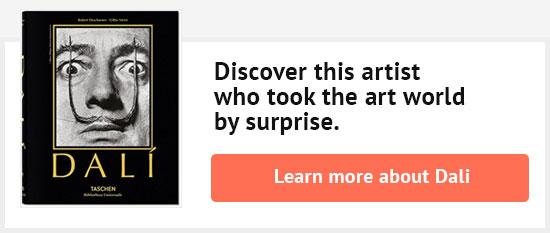Surrealist cinema

With no narrative logic and no spatiotemporal dimension, the surrealist films have revolutionised the cinema world, still very young in 1930.
Bringing together major figures such as Luis Buñuel, Salvador Dalí and Germaine Dulac, the surrealist cinema has had such an impact whose reach in the 20th century cinema we cannot even measure.
On February 9th, 1928, the Studio des Ursulines, in Paris, shows The Seashell and the Clergyman, an average film directed by Germaine Dulac. The objective of the playwright Antonin Artaud, who wrote the script, is to transpose the viewer into a dream world, thanks to a powerful aesthetic. This aesthetic, according to Artaud, cannot simply settle for only visual effects; the film must be dreamlike in content as much as in form, structure, screenplay, and art direction. The result of this theory is the first surrealist film, a piece that is not based on storytelling: the era when the narrative and burlesque cinema of Buster Keaton and the Marx Brothers reign supreme in the world of international cinema, a movie where the image and the concept take on the scenario is already a large revolution.
Un chien andalou (an andalusian dog)
A year later, on June 6th, 1929, Luis Buñuel and Salvador Dalí sign Un Chien Andalou. The film was immediately recognized and legitimized by the surrealists as joining the movement. Again no apparent narrative structure, Un Chien Andalou combines the dream world with reality without differentiating. The scenes, sometimes absurd, and sometimes not, follow one another, with a thin thread (recurring characters and locations). With the subject of violent relations between a man and a woman, the film leaves plenty of room for interpretation: ants, pianos and dead donkeys appear and disappear, and is up to the viewer only to appropriate these images. Written on the Exquisite Corpse model, it took Buñuel and Dalí 6 days to compose the scenario of Un Chien Andalou in its entirety.
To the surprise of Buñuel and Dalí, Un Chien Andalou receives many positive reviews and generates neither violence nor insurrection. Picasso attends to the great premiere, as well as Le Corbusier, Jean Cocteau, and the entire group of surrealists of André Breton. Dalí and Buñuel receive a commission of rich Viscount Charles de Noailles, to make a sequel of this unprecedented film. It is barely a year later, on 28th November 1930, the two filmmakers come back and produce the Golden Age. The film, much more violent, steeped in pessimism, dark humor and even passages of the Marquis de Sade, was quickly banned by the commission of censorship. According to the journalist Freddy Buache is still one of the most important films to be produced, "Luis Buñuel showed with The Golden Age the only real cry, the most inimitable howl for human freedom in the history of cinema.”
Most experts say that the surrealist cinema died in 1930, with The Blood of a Poet, of Jean Cocteau. Nevertheless, as in all other fields of art, the influence of the Surrealism on what is to come in the world of cinema for the rest of the 20th century is immeasurable. Great filmmakers like Federico Fellini, Alejandro Jodorowsky and David Lynch work, in the style of surrealism, with the dream and the psychology of the subconscious in their pieces. Animated films, fantasy films and much of the eastern countries of cinema have much of surrealist influence. Finally, the innovation of the dys-narratif cinema will never disappear from the world of the big screen, bringing at the time, and even today in some way, the only resistant wide-audience cinema, following a precise narrative structure, produced by Hollywood.
Surrealist film

“Words make love with one another.”
See more quote by André Breton
- History of Surrealism André Breton Branches of Surrealism Timeline Surrealist cinema The Automatistes Group Surrealism Manifesto Origin of surrealist painting Surrealist writing techniques
- Surrealist Artists Francis Picabia Jean Arp Joan Miro Man Ray Max Ernst
- René Magritte Biography Magritte & Lothar Wolleh
- Salvador Dali Biography Artworks Eccentric character Dali & Man Ray Dali & Picasso L'Âge d'or The Persistence of Memory The Hallucinogenic Toreador Movies Salvador Dali Museum



